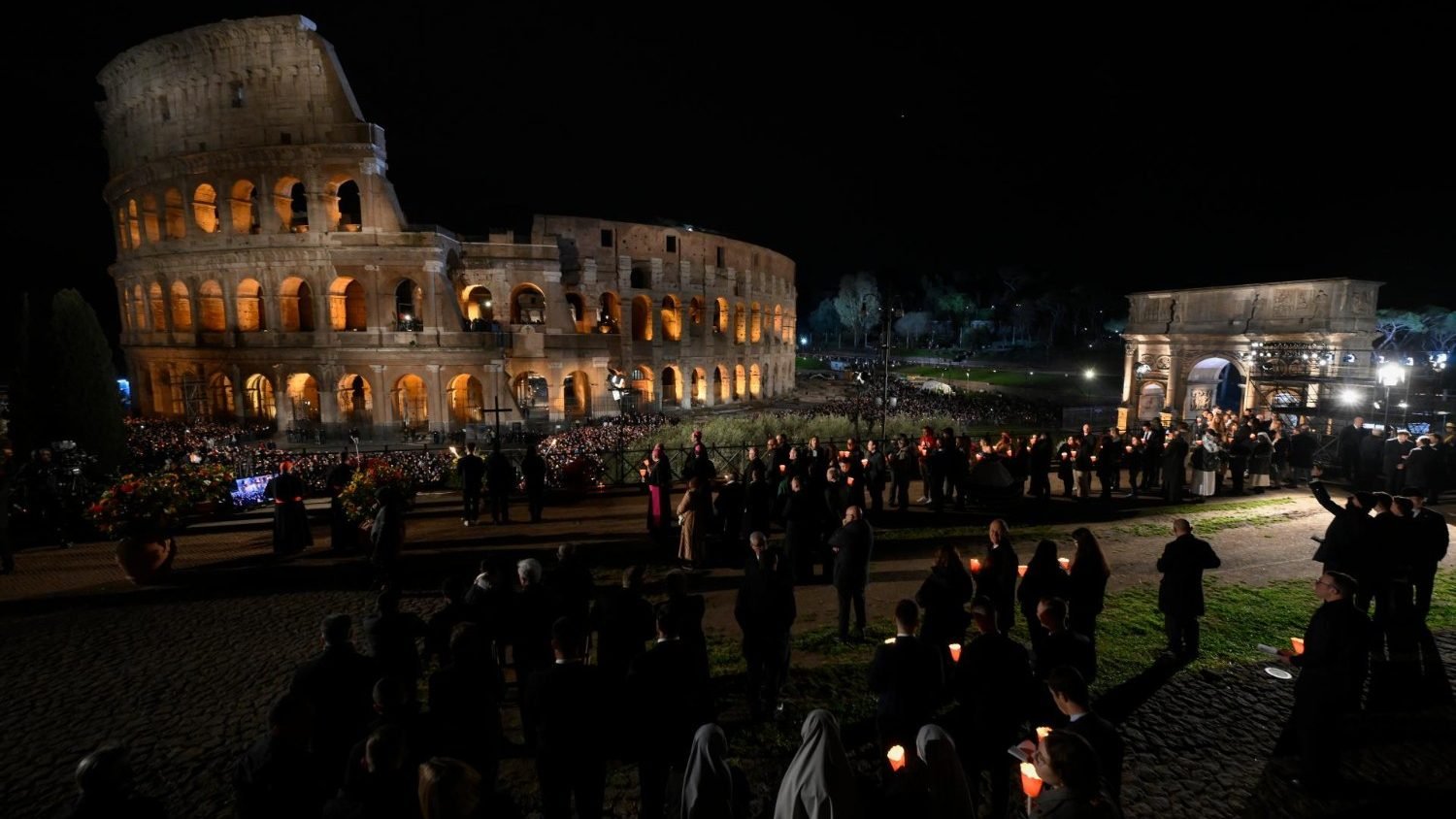Pope Francis released his thoughts on the Station of the Cross on Good Friday, saying, “With God, suffering is never final.”
Tiziana Campisi
Pope Francis’ meditation on the Way of the Cross on Good Friday is a dialogue with Jesus, a face-to-face conversation with Christ, consisting of reflection, questioning, introspection, confession, and prayer.
The suffering of Jesus on the road to Golgotha, the loving gaze of Mary, the women who offer their help, Simon of Cyrene and Joseph of Arimathea. All of these characters cause an examination of conscience that becomes a prayer, a final prayer. Repeat the name of Jesus 14 times.
the silence of jesus
Jesus’ journey along the Way of the Cross reveals deep lessons about prayer, compassion, and forgiveness in Pope Francis’ meditation.
In the first station, Jesus’ silence in the face of unjust accusation embodies prayer, kindness, and forgiveness, demonstrating the transformative power of suffering offered as a gift. This silence is alien to modern humanity, which is distracted by noise and busyness, but it emphasizes the importance of listening to the heart in prayer.
As Jesus takes on the weight of the cross (station 2), we are reminded of common experiences of pain, disappointment, and failure. Despite the burdens we carry, Jesus invites us to find comfort in Him, showing us that love keeps us going and that even when we fall, we can get back up.
Mary: a gift to humanity
The encounter with Mary, the mother of Jesus (station 4) shows that she is a gift given to humanity. She embodies her grace, the memory of God’s wonders, and her gratitude, and invites us to turn to her for her comfort and guidance. Helping Simon of Cyrene carry the cross (station 5) invites reflection on the difficulty of asking for help in life’s difficulties and emphasizes the importance of humility and dependence on others.
courage of compassion
Veronica’s compassionate act of wiping Jesus’ face amidst the condemnation and ridicule of the crowd (6th station) shows love in action. Despite the weight of humiliation and defeat, Jesus’ resilience to rise after falling (station 7) reflects our own struggle with life’s pressures and our ability to save through God’s forgiveness.
greatness of women
Encounters with the women of Jerusalem (8th Station) encourage recognition of the greatness of often overlooked women who demonstrate deep empathy and compassion. Contemplating Jesus unclothed (station 9) invites us to see divinity in suffering, to shed superficiality and embrace vulnerability.
darkest hour
In the darkest hour of abandonment (station 11), Jesus’ cry teaches us the importance of expressing our suffering to God in the storms of life. The Thief’s Salvation (Twelfth Station) transforms the cross into a symbol of love, offering hope even in death. Mary’s embrace of the lifeless Jesus (station 13) signifies acceptance and faith in the transformative power of love.
Finally, the dignified burial of Jesus by Joseph of Arimathea (14th station) emphasizes the reciprocity of love and shows that every act dedicated to God is richly rewarded.
You can read Pope Francis’ meditation here.

